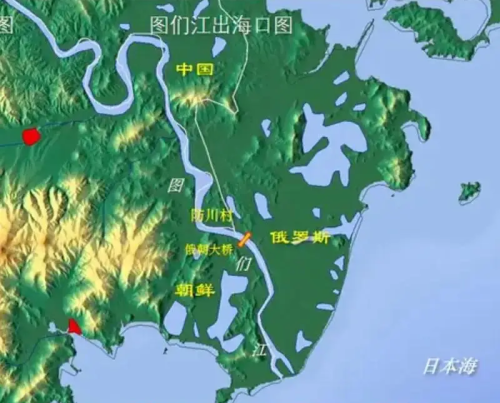Recently, the Chinese Coast Guard fleet announced its entry into the ArcticOcean for the first time. The cruise reached waters near Alaska in the UnitedStates. Why is this actually breaking the American structure? China does not border the Arctic. It is not part of the ArcticCouncil. China's coast guard has come under the direct control of the central military commission chaired by XiJinping. The ships used by the Chinese coast guard are former PLAN frigates also armed with guns. Joint exercises between Russia and China in the Arctic and NorthPacific are exclusively military in nature, masquerading as coast guard patrols. The first round is the containment round. This is equivalent to breaking the blockade of the first, second and third island chains in the field of law enforcement and announcing to the world: China's coast guard not only manages China's exclusive economic zone, but also the high seas! The second bureau is the strategic bureau. In May this year, during Putin's visit to China, a joint statement was issued with China. The joint statement mentioned three cooperation projects, the Arctic route, Heixiazi Island and the Tumen River estuary. The third game is the future game. In 1975, a proposal was put forward to build a Chinese scientific research station in Antarctica. On July 28, 2004, China's Arctic Yellow River Station was completed and put into use. Since then, China has had a permanent observation and research platform in the Arctic, completing China's strategic layout for participating in the Arctic game. For China, sending coast guard ships into the Arctic Ocean can not only measure various hydrological data and accumulate data for future Arctic routes, but more importantly, it can demonstrate its jurisdiction by implementing administrative law enforcement in the Arctic Ocean. Then, when countries sign the Arctic Treaty and divide the Arctic Ocean in the future, China will be qualified to ask for a share. Therefore, strength determines status.
by Nicola and Gabriele Iuvinale
Since the beginning of this year, as the confrontation between China and the Philippines in the South China Sea has become increasingly fierce, Chinese coast guard in the South China Sea has begun to appear frequently in the news.
However, during the National Day holiday, China’s Coast Guard made headlines again, but this time it was not in the South China Sea, but in the “North Sea”.
On October 1, China Coast Guard ships 2303 Meishan and 2305 Xiushan sailed through the Bering Strait and officially entered the Arctic Ocean. This was also the first time that Chinese Coast Guard ships entered the Arctic Ocean.
these two coast guard ships are actually Type 818 coast guard ships built based on the Type 054A missile frigate. They have a full load displacement of 3,800 tons, strong endurance and high self-sustaining capacity, making them more suitable for long-distance missions.
So, why are Chinese coast guard ships going to the Arctic Ocean now? Two words: break the deadlock.
The first round is the containment round.
In June this year, China completed its law enforcement registration with the Western and Central Pacific Fisheries Commission (WCPFC), based on the Convention on the Conservation and Management of Highly Migratory Fish Stocks in the Western and Central Pacific Ocean, which came into force on June 19, 2004. Under the management of this convention, 20% of the world's oceans are covered, including the first, second and third island chains, such as the Bering Sea, the Aleutian Islands and even the waters off Alaska.
After the law enforcement registration is completed, China can legally board any foreign fishing vessel for inspection in such a vast area.
This is equivalent to breaking the blockade of the first, second and third island chains in the field of law enforcement and announcing to the world: China's coast guard not only manages China's exclusive economic zone, but also the high seas!
Once the activity area is expanded, many things will become easier to handle. When Chinese cargo ships and fishing boats encounter the US Coast Guard in the Pacific Ocean, as long as there are Chinese coast guard ships nearby, they can respond quickly and deal with various difficult problems.
In addition, China can also provide some strategic support to Russia in diplomacy.
Therefore, the main task of the Chinese Coast Guard this time is actually to carry out joint patrols in the North Pacific with the Russian Coast Guard. Going to the Arctic Ocean is just another matter.
The second bureau is the strategic bureau.
In May this year, during Putin's visit to China, a joint statement was issued with China.
The joint statement mentioned three cooperation projects, the Arctic route, Heixiazi Island and the Tumen River estuary.
It seems that these three projects have nothing to do with each other, but if you think about it a little, you will find that this is a grand layout that is enough to overturn the entire geopolitical strategic pattern of Northeast Asia.
Let's look at the Arctic route first. The Arctic route is not a new term. Originally, the Arctic was a thick ice sheet that directly connected the northern end of the Eurasian continent. But in recent years, as the earth's climate continues to warm, the ice sheet has become smaller and smaller, at least in the coastal waters in summer, which has met the conditions for the development of the Arctic route.
Chinese cargo ships depart from the Arctic route to Europe. On the one hand, the distance is shorter, 5,000 kilometers shorter than the Suez Canal route, which can save about 15 days. On the other hand, it is safer, and they don’t have to go through the Strait of Malacca, avoiding the Malacca dilemma.
Therefore, China and Russia announced in a joint statement that they would establish an Arctic shipping cooperation subcommittee to promote the construction of Arctic shipping logistics infrastructure.
But what? There is a bug in this route, that is the Tsushima Strait. Chinese cargo ships departing from Qingdao or Dalian ports to the Bering Strait must go through the Tsushima Strait. Isn't this a new dilemma?
Therefore, China and Russia proposed a development plan for Heixiazi Island. Heixiazi Island is located at the confluence of the Heilongjiang River and the Wusuli River, which is very suitable for the construction of a water port. The river has abundant water and strong navigation capacity. Therefore, in the planning of Heilongjiang, there has always been a plan to develop Heixiazi Island for rail-water transport. Now the development of Heixiazi Island has been written into the joint statement. Obviously, Heixiazi Island has great prospects for going out to sea.
Of course, this plan is good, but because the latitude of the estuary is too high, it will freeze in winter. After all the hard work of building a port, it is impossible to only open to navigation for half a year a year? It doesn't matter, there is still the Tumen River estuary. There is such a sentence in the Sino-Russian "Joint Statement": The two sides will conduct constructive dialogue with the Democratic People's Republic of Korea on the issue of Chinese ships sailing to the sea through the lower reaches of the Tumen River.
If this is implemented, Chinese cargo ships will be able to go down the river and directly enter the Sea of Japan, either taking the Arctic route directly or changing to larger ships in Vladivostok and then heading to the Arctic Ocean.
The greatest significance of this matter is not that the three northeastern provinces have a direct access to the sea, but more importantly, it has given China a route to Europe and even Africa that will never be threatened! If the United States threatens China with the Malacca and Indian Ocean routes in the future, China will also have the confidence to respond! In other words, I can choose not to use this route, but I can't live without it!
The third game is the future game.
In 1975, a proposal was put forward to build a Chinese scientific research station in Antarctica.
Similarly, traveling to the Arctic now is also a leisurely move made by China in its busy schedule, and this leisurely move was laid out 100 years ago.
There is an archipelago called Svalbard in the Arctic Ocean, which is rich in resources. At the end of the 19th century, Norway and Russia had a dispute over the sovereignty of the islands and neither side would give in. In order to protect their own interests, the great powers proposed to make the archipelago "open" so that all countries could "share the benefits equally."
On February 9, 1920, a number of signatory countries signed the Svalbard Treaty in Paris. The treaty recognized Norway's sovereignty over the Svalbard Islands, but the right to exploit the island's resources was equally enjoyed by all signatory countries. Citizens of the signatory countries could freely enter and exit the Svalbard Islands, and could freely engage in a series of activities on the island except military, such as scientific research, mining, and business, without time limit, and without the need to apply for a stay permit from Norway.
Interestingly, the Beiyang government of China at that time also sent representatives to sign this treaty. In this way, China has the right to develop the underground resources of Svalbard and the surrounding sea resources.
However, after China signed this treaty, it forgot about it. It was not until the 1990s, when China was planning to build its own Arctic scientific research station, that it discovered in a pile of old papers that China had also signed this treaty. So it quickly contacted Norway and demanded to exercise the rights granted by the Svalbard Treaty.
The treaty was signed in black and white, so Norway could not say anything. On July 28, 2004, China's Arctic Yellow River Station was completed and put into use. Since then, China has had a permanent observation and research platform in the Arctic, completing China's strategic layout for participating in the Arctic game.
You know, the Arctic is one of the last undeveloped sea areas for mankind. Not only are there rich fishery resources under the ice, but more importantly, due to the surrounding land, more than half of the Arctic Ocean is located above the continental shelf, which is a typical oil and gas hidden area.
According to recent survey results, the oil reserves at the bottom of the Arctic Ocean within the Arctic Circle are as high as 90 billion barrels, accounting for 13% of the world's total reserves. In addition, the Arctic Ocean also contains a quarter of the world's undeveloped natural gas reserves!
As the Arctic glaciers gradually melt, the development of Arctic oil and gas resources seems unstoppable under the temptation of huge resources.
For China, sending coast guard ships into the Arctic Ocean can not only measure various hydrological data and accumulate data for future Arctic routes, but more importantly, it can demonstrate its jurisdiction by implementing administrative law enforcement in the Arctic Ocean. Then, when countries sign the Arctic Treaty and divide the Arctic Ocean in the future, China will be qualified to ask for a share. Therefore, strength determines status.
Rights Reserved
Source Guancha

















Comments